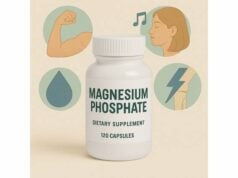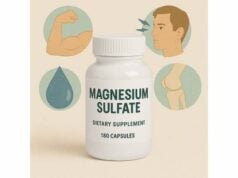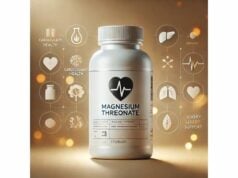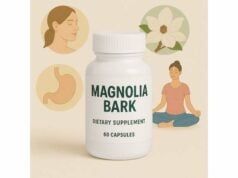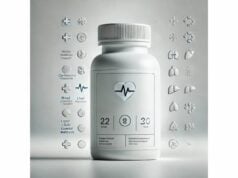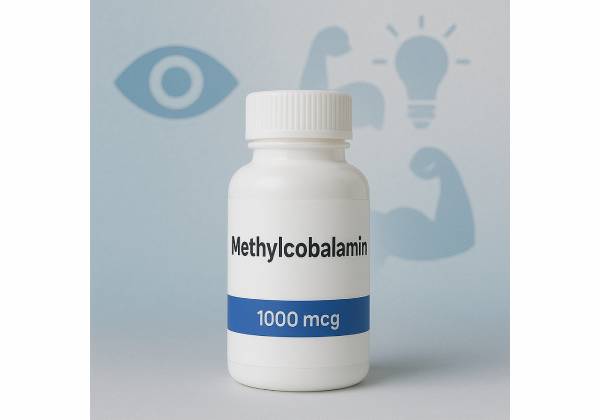
Methylcobalamin is one of the biologically active forms of vitamin B12—the essential nutrient that powers DNA synthesis, supports red blood cell formation, and keeps nerves functioning. Unlike cyanocobalamin (a common supplemental form that must be converted), methylcobalamin is “coenzyme-ready” for methylation reactions, including remethylation of homocysteine to methionine. People look to it for correcting low B12 status, addressing metformin-associated depletion, and supporting nerve health in conditions such as diabetic neuropathy. It is available as oral tablets, sublingual lozenges, sprays, and injections. Most evidence suggests oral and sublingual routes can restore levels effectively for many people, while injections remain valuable for severe deficiency and malabsorption. Safety is generally excellent, with no established upper limit for healthy adults, though individualized dosing matters. This guide synthesizes what methylcobalamin is, when it helps, how to choose a form and dose, who should avoid it or be cautious, and what the best-quality clinical research shows—so you can make informed decisions in partnership with your clinician.
Essential Insights
- Improves B12 status and supports nerve function; oral 1,000 mcg/day showed neuropathy benefits in trials.
- Generally well tolerated; monitor B12 if on metformin or acid-suppressing drugs.
- Typical supplementation: 250–1,000 mcg/day orally; deficiency therapy often 1,000–2,000 mcg/day (or IM by prescription).
- Avoid self-treating severe symptoms (anemia, neurologic changes); seek medical evaluation first.
- People with pernicious anemia, significant GI malabsorption, or severe deficiency often need supervised high-dose or injectable therapy.
Table of Contents
- What is methylcobalamin and how does it work?
- What benefits are supported by good evidence?
- Who benefits most and how to choose a form?
- How to take methylcobalamin: dosing, timing, and duration
- Safety, interactions, and who should avoid it
- Evidence snapshot and practical FAQs
What is methylcobalamin and how does it work?
Methylcobalamin is one of two coenzyme forms of vitamin B12 used by human cells (the other is adenosylcobalamin). Vitamin B12 is a cobalt-containing compound required for two enzymes: methionine synthase, which remethylates homocysteine to methionine (supporting S-adenosylmethionine, the body’s universal methyl donor), and methylmalonyl-CoA mutase, which helps metabolize odd-chain fatty acids and certain amino acids. When B12 is low, methylmalonic acid (MMA) and homocysteine rise, and downstream effects—megaloblastic anemia, neuropathy, cognitive changes—can follow. Because methylcobalamin is already in the “methyl” form, many consumers assume it is inherently superior to cyanocobalamin. In practice, both forms can correct deficiency; cyanocobalamin is converted to active forms after absorption, while methylcobalamin is directly active in methylation pathways. The choice typically depends on availability, cost, clinician preference, and the clinical scenario.
Absorption occurs primarily in the distal ileum via intrinsic factor–mediated uptake. A small percentage (about 1–2%) is absorbed passively at high oral doses, which is why 1,000–2,000 mcg/day can work even when intrinsic factor is absent or impaired. Sublingual tablets are popular, but current evidence indicates no consistent advantage over standard oral forms when equal doses are compared. Intramuscular (IM) and occasionally subcutaneous injections bypass the gut entirely and are used for severe deficiency, pernicious anemia, or situations where adherence or absorption is unreliable. A prescription intranasal form also exists post-repletion.
Where does methylcobalamin stand out? Interest has centered on nerve health. Trials in diabetic neuropathy have used 1,000 mcg/day orally for extended periods (e.g., 12 months) with reported improvements in pain scores and neurophysiological markers. Experimental and clinical work has also explored high-dose injectable methylcobalamin for amyotrophic lateral sclerosis (ALS), where an ultrahigh-dose regimen (50 mg IM twice weekly under specialist care) slowed functional decline in early disease over a short randomized phase—this is not standard supplementation and requires medical oversight.
Dietary sources of B12 are mostly animal-derived foods (meat, fish, dairy, eggs) and fortified products. People who are vegan, older adults with atrophic gastritis, those using acid-suppressing medications or metformin, and individuals with GI disorders are at higher risk of low B12 status. For these groups, methylcobalamin supplements can be an accessible way to maintain adequate levels. Blood B12 alone can be misleading; clinicians often confirm deficiency with MMA and homocysteine, especially when B12 is borderline.
Bottom line: methylcobalamin is a valid, bioactive B12 form that can correct deficiency and may offer nerve-related benefits in select contexts. The “best” form is the one that restores levels and resolves symptoms safely for your situation.
What benefits are supported by good evidence?
Correcting deficiency is the primary, well-established benefit. Restoring B12 normalizes DNA synthesis, supports red blood cell maturation, and helps resolve megaloblastic anemia and neurologic symptoms (numbness, paresthesias, impaired vibration sense). In many adults with mild to moderate deficiency, oral or sublingual methylcobalamin at 1,000–2,000 mcg/day effectively raises serum B12 and lowers MMA and homocysteine, with clinical improvement typically unfolding over weeks to months. Because B12 deficiency often arises slowly, nerve recovery can be gradual; early treatment improves the chance of reversibility.
Nerve health beyond simple deficiency is an area of active study. In diabetic peripheral neuropathy (particularly in people on long-term metformin with B12 levels below ~300–400 pmol/L), a randomized, double-blind, placebo-controlled trial reported that 1,000 mcg/day oral methylcobalamin for 12 months improved pain scores, sudomotor function, neurophysiological parameters, and quality of life compared with placebo. Meta-analyses suggest vitamin B12 can reduce neuropathic pain and improve symptoms in diabetic neuropathy, especially when baseline B12 is low. Some studies used methylcobalamin alone; others combined it with agents like benfotiamine or alpha-lipoic acid—combinations may provide additive effects, but they make methylcobalamin’s independent contribution harder to quantify.
In ALS, ultrahigh-dose methylcobalamin (50 mg IM twice weekly) started early after symptom onset slowed functional decline over a 16-week randomized period in a multicenter phase 3 trial. This regimen is pharmacologic (not nutritional) and differs from over-the-counter supplementation by orders of magnitude. It requires medical oversight for selection, monitoring, and access. While promising, it is not a generalized indication for high-dose B12 in neurodegeneration.
Cardiovascular markers are sometimes discussed. Because B12 remethylates homocysteine, supplementation can reduce elevated homocysteine when B12 deficiency is present. However, homocysteine lowering with B-vitamins has not consistently translated into fewer cardiovascular events in average-risk populations, so B12 should not be used as a heart-disease treatment absent deficiency or specific clinical indications.
Cognition is nuanced. Severe B12 deficiency can cause cognitive changes; treating the deficiency is essential and may improve function, particularly when addressed early. In people with normal B12, routine supplementation has not reliably improved memory or prevented dementia. Energy claims are similar: B12 corrects deficiency-related fatigue but does not act as a stimulant in replete individuals.
For hematologic health, replacing B12 corrects macrocytosis and improves anemia metrics. Reticulocytosis can appear within a week of adequate therapy; hemoglobin typically normalizes over several weeks. When iron or folate deficiency coexists, all deficits must be addressed.
Summary of benefits with the strongest support:
- Correction of B12 deficiency (hematologic and neurologic).
- Improvement of diabetic neuropathy outcomes when baseline B12 is insufficient and therapy is sustained.
- Reduction of homocysteine when elevated due to B12 deficiency (clinical event reduction is uncertain).
- Pharmacologic, specialist-directed role in early ALS with ultrahigh-dose injections, not routine self-supplementation.
Who benefits most and how to choose a form?
You’re most likely to benefit from methylcobalamin if you (1) have confirmed or probable deficiency, (2) belong to an at-risk group, or (3) take medications that reduce B12 absorption. Common risk factors include vegan or largely plant-based diets without fortified foods, age over 60 (atrophic gastritis), bariatric surgery, inflammatory bowel disease affecting the ileum, pernicious anemia (autoimmune intrinsic factor deficiency), long-term metformin use, and chronic acid suppression with proton-pump inhibitors or H2 blockers. Symptoms that should prompt medical evaluation include numbness or tingling, loss of vibration sense, difficulty walking, glossitis, unexplained fatigue, and macrocytosis on blood counts.
Form selection hinges on practicality and the cause of deficiency:
- Oral tablets/capsules (methylcobalamin): Convenient, inexpensive, and effective for most people. Passive diffusion allows absorption of small percentages at high doses, enabling correction even with intrinsic factor problems when doses are ≥1,000–2,000 mcg/day.
- Sublingual lozenges/sprays: Useful if you prefer not to swallow pills; controlled trials generally show similar efficacy to oral tablets at equal doses.
- Intramuscular injections (usually cyanocobalamin or hydroxocobalamin by prescription; methylcobalamin is used in some countries): Indicated for severe deficiency, pernicious anemia, symptomatic neurologic involvement, or when adherence and absorption are concerns. Injections can rapidly replenish stores under medical supervision.
- Intranasal prescription gel: A maintenance option after parenteral repletion for people who prefer to avoid injections.
Choosing methylcobalamin vs cyanocobalamin: both restore B12 status. Cyanocobalamin is stable and widely used in multivitamins; methylcobalamin is the active coenzyme form and popular in standalone B12 products. People with advanced kidney disease are sometimes steered toward methylcobalamin or hydroxocobalamin due to theoretical concerns about cyanide moieties from cyanocobalamin; discuss with your nephrologist. For routine supplementation, the determinant is usually dose, adherence, and confirmation that levels and symptoms improve.
How to know it’s working: track symptoms, and ask your clinician about labs. Serum B12 can rise rapidly, but MMA and homocysteine better reflect functional status. If neurological symptoms are present, clinicians often treat more aggressively and for longer, then reassess clinically alongside labs. For people on metformin, periodic B12 monitoring is advisable—particularly if anemia or neuropathy develops.
Budget and formulation tips:
- If you need maintenance only, 250–500 mcg/day is often adequate.
- If you need repletion, 1,000–2,000 mcg/day orally (or supervised injections) is a common approach.
- Sublingual is fine if you prefer it; don’t pay extra expecting superior absorption.
- Combination products (e.g., B-complex, B12+folate) can be convenient, but ensure the B12 dose meets your needs and avoid folic acid “masking” an untreated B12 deficiency—medical evaluation comes first.
How to take methylcobalamin: dosing, timing, and duration
General use and maintenance. For people aiming to maintain healthy B12 status—vegans, older adults with low intake, or those on long-term metformin or acid suppression—250–1,000 mcg/day of oral methylcobalamin is a practical range. Many multivitamins provide only 5–25 mcg, which may not suffice for at-risk groups; standalone B12 supplements commonly supply 500–1,000 mcg. Because absorption saturates, splitting large doses offers no consistent advantage, but some prefer twice-daily dosing for comfort.
Deficiency correction (non-urgent). A frequent oral protocol is 1,000–2,000 mcg/day of methylcobalamin for 8–12 weeks, followed by a maintenance dose (e.g., 250–1,000 mcg/day) once levels normalize and symptoms improve. Clinicians tailor duration based on severity, cause, adherence, and lab response. People with borderline levels and compatible symptoms may begin supplementation while confirmatory tests (MMA, homocysteine) are pending, guided by a clinician.
Deficiency with neurologic symptoms or malabsorption. When numbness, gait disturbance, or cognitive changes suggest significant neurologic involvement, many clinicians choose parenteral therapy first (e.g., injections), then transition to oral or intranasal maintenance. If pernicious anemia or substantial ileal disease is present, long-term parenteral schedules may be preferred. In some regions, methylcobalamin injections are used; elsewhere, hydroxocobalamin or cyanocobalamin is standard.
Neuropathy support. In clinical research involving diabetic neuropathy, 1,000 mcg/day oral methylcobalamin taken for 6–12 months improved neurophysiology and symptoms when baseline B12 was insufficient. Shorter courses are less likely to help; nerves repair slowly. If metformin is part of your regimen, ask your clinician to monitor B12 periodically and consider supplementation if levels trend low.
Specialist therapies. Ultrarigh-dose methylcobalamin injections used in ALS trials (e.g., 50 mg IM twice weekly) are research-grade, physician-directed regimens—not over-the-counter supplementation. Do not attempt high-dose injectable protocols without specialist oversight.
Timing with food and other supplements. B12 is water-soluble and can be taken with or without food. If you also take folate or iron, continue as advised; these nutrients address different aspects of blood formation. If you take vitamin C, spacing it by an hour is a conservative practice (high doses of vitamin C taken simultaneously may theoretically reduce B12 availability in vitro, though clinical significance is uncertain). For sublinguals, allow the tablet to dissolve fully.
Assessing success. Expect energy to improve within weeks if anemia was present; neurologic changes can take months and may be incomplete if deficiency was prolonged. Your clinician may recheck B12, MMA, and homocysteine after 2–3 months, then adjust maintenance.
Practical ranges (adults):
- Maintenance in at-risk adults: 250–1,000 mcg/day orally.
- Deficiency repletion (oral): 1,000–2,000 mcg/day for 8–12 weeks, then maintenance.
- Neuropathy research dosing: 1,000 mcg/day orally for 6–12 months.
- Parenteral dosing: individualized by clinician; frequency tapers after initial loading.
Safety, interactions, and who should avoid it
Methylcobalamin has a strong safety profile. No tolerable upper intake level (UL) has been established for vitamin B12 in healthy adults due to low toxicity. Mild, transient effects (nausea, diarrhea, headache) can occur. Rare skin reactions (acneiform eruptions, rosacea-like dermatitis) have been reported; discontinuation usually resolves them. Because B12 can influence lab tests, very high serum levels may complicate interpretation of certain biomarkers without necessarily indicating harm. Persistently elevated B12 in the absence of supplementation warrants medical evaluation for underlying conditions.
Medication interactions and monitoring.
- Metformin commonly lowers B12 levels in a dose- and duration-dependent manner. People on metformin should be assessed if they develop anemia, neuropathy, or suggestive symptoms, and periodic monitoring may be considered in those with risk factors.
- Acid suppression (PPIs, H2 blockers) can reduce food-bound B12 absorption over time, particularly in older adults; fortification or supplements can help.
- Colchicine, nitrous oxide exposure, certain anticonvulsants may affect B12 status or function. Nitrous oxide inactivates B12 and can precipitate neurologic injury, especially in people with marginal stores; urgent medical care is needed if exposure leads to neurologic symptoms.
Who should avoid self-treatment or use extra caution:
- Anyone with symptoms of significant anemia, neurologic changes (gait disturbance, paresthesia, memory issues), or visual changes: get evaluated promptly; delaying appropriate therapy risks permanent deficits.
- People with pernicious anemia, bariatric surgery, or severe GI malabsorption: you may need supervised injectable therapy.
- Individuals with Leber hereditary optic neuropathy should avoid cyanocobalamin; methylcobalamin or hydroxocobalamin may be preferred—specialist guidance is essential.
- Advanced kidney disease: discuss the B12 form with your nephrologist; methylcobalamin or hydroxocobalamin is often chosen over cyanocobalamin.
- Pregnancy and lactation: B12 is essential; meet the RDA (2.6–2.8 mcg/day) through diet and prenatal care. Supplemental methylcobalamin at typical doses is considered compatible, but dosing to treat deficiency should be clinician-directed.
Allergies and sensitivities. True cobalamin allergy is rare; reactions are often due to excipients. If you experience rash or breathing difficulty, stop and seek care.
Laboratory follow-up. After starting supplementation for deficiency, clinicians may check CBC, B12, MMA, and homocysteine within 8–12 weeks, then space out testing during maintenance. For metformin users, re-testing strategies vary with risk; many clinicians recheck annually if risk is high or symptoms occur.
Bottom line: methylcobalamin is low-risk for most, but the presence of significant symptoms, underlying conditions, or interacting medications argues for medical evaluation and tailored therapy rather than self-directed dosing.
Evidence snapshot and practical FAQs
How strong is the evidence for oral vs sublingual vs injections?
A recent systematic review and network meta-analysis concluded that oral, sublingual, and intramuscular routes all effectively increased B12 levels without clinically meaningful differences between them. That means route selection can be guided by severity, cause, convenience, and cost. Injections are invaluable when malabsorption is severe, neurologic symptoms are prominent, or adherence is uncertain; otherwise, oral/sublingual often suffice.
Does methylcobalamin “work better” than cyanocobalamin?
Both restore B12 status. Methylcobalamin is the coenzyme form and widely used in standalone supplements; cyanocobalamin is very stable and prevalent in multivitamins and prescriptions. Comparative head-to-head clinical outcome data are limited; the critical factor is adequate dosing and documented response. Special populations (e.g., advanced kidney disease) may prefer non-cyanide forms; discuss with your clinician.
What about neuropathy?
In a one-year randomized, double-blind trial in people with diabetic neuropathy on long-term metformin and B12 <400 pmol/L, 1,000 mcg/day oral methylcobalamin improved pain and neurophysiology. Meta-analyses broadly support symptom improvement when deficiency or insufficiency is present. Benefits take time; plan on months, not weeks, and manage glucose, lipids, and blood pressure concurrently.
What about ALS?
A multicenter phase 3 randomized study in early-stage ALS found that 50 mg methylcobalamin IM twice weekly for 16 weeks slowed functional decline relative to placebo. This is a specialist treatment, not an over-the-counter regimen, and it applies to carefully selected patients early in their disease course.
Do I need lifelong supplementation?
If deficiency is due to low intake (e.g., vegan diet), long-term supplementation or regular consumption of fortified foods is usually needed. If a reversible cause (short-term medication or illness) is corrected, you may taper to a lower maintenance dose or discontinue under guidance once labs and symptoms normalize. Pernicious anemia and certain surgeries often require lifelong therapy.
How should I store it and what if I miss a dose?
Store at room temperature away from moisture. If you miss a dose, take it when you remember unless it’s close to the next dose; don’t double up—consistency matters more than exact timing. For injections, follow the schedule your clinician sets.
Key takeaways for action:
- Confirm the cause of low B12 when possible; test MMA/homocysteine if levels are borderline.
- Choose a form you’ll take consistently; oral and sublingual work well for most.
- For maintenance, consider 250–1,000 mcg/day; for repletion, 1,000–2,000 mcg/day before tapering.
- If you are on metformin or long-term acid suppression, discuss periodic B12 checks.
- Seek medical care promptly for neurologic symptoms—time matters.
References
- Vitamin B12 – Health Professional Fact Sheet 2025 (Guideline/Fact Sheet)
- Efficacy of different routes of vitamin B12 supplementation for the treatment of patients with vitamin B12 deficiency: A systematic review and network meta-analysis 2024 (Systematic Review)
- Vitamin B12 Supplementation in Diabetic Neuropathy: A 1-Year, Randomized, Double-Blind, Placebo-Controlled Trial 2021 (RCT)
- Efficacy and Safety of Ultrahigh-Dose Methylcobalamin in Early-Stage Amyotrophic Lateral Sclerosis: A Randomized Clinical Trial 2022 (RCT)
- Metformin and reduced vitamin B12 levels: new advice for monitoring patients at risk 2022 (Regulatory Guidance)
Medical Disclaimer
This article provides general educational information about methylcobalamin and vitamin B12. It is not a substitute for individualized medical advice, diagnosis, or treatment. Do not start, stop, or change any medication or supplement without discussing it with your qualified healthcare professional, especially if you have neurologic symptoms, anemia, pregnancy, chronic kidney disease, or autoimmune conditions. If you experience concerning symptoms (e.g., numbness, weakness, vision changes), seek medical attention promptly.
If you found this guide helpful, please consider sharing it on Facebook, X (formerly Twitter), or your favorite platform, and follow us for future evidence-based updates. Your support helps us continue creating high-quality, reader-centered health content.

